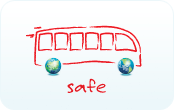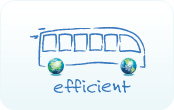 |  |  |  |  |
|





|
China & Colombia are ahead in Bus Rapid TransitBus rapid transit (BRT) ranks among the cheapest and quickest ways to cut CO2 emissions by transportation. According to a study conducted by the Institute for Transportation and Development Policy (ITDP), the cities that have delivered the Bus Rapid Transit System most successfully while cutting the most carbon are in South Africa, Colombia, India and China. On a 100-point scale, Bogotá, Colombia scored highest with 93, while the new system in Guangzhou, China, ranked second at 89. Meanwhile, United States' leading BRT, Cleveland, scored a 63 and New York City BRT received a 35.
According to ITDP's executive director, Walter Hook, modifying roads to let buses run loose is not as hard, as cities already have road networks, and there is less new infrastructure that needs to be built, as most cities already have buses. These factors make BRT cheaper to build than rail. BRT is also more likely to break even than rail projects, which critics say underestimate cost and overestimate revenues.
Hook believes BRT can appeal to U.S. cities because all buses can use it. Most cities already have buses, so they can run their regular routes as they do today. But those buses can also turn onto a major corridor, enjoying the private lanes and quick boarding featured in the world's best BRTs.
David Goldberg, communications director for Transportation for America, said one good fit for BRT would be along the highways that spike out from cities. These would help bring people to the struggling strip malls that they would normally ignore in a time of pricey gas. The road's already there, he said, BRT could be the catalyst to help these far-flung neighborhoods transform into neighborhoods less dependent on driving.
Read more |

